 W
WAdela of Normandy, of Blois, or of England, also known as Saint Adela in Roman Catholicism, was a daughter of William the Conqueror and Matilda of Flanders who later became the countess of Blois, Chartres, and Meaux by marriage to Stephen II of Blois. Her husband greatly benefited from the increased social status and prestige that came with such a marriage. She brought with her not only her bloodline, but a dowry of money and other movable goods from the prodigious store of Anglo-Norman wealth. She was regent of Blois during the absence of her spouse in 1096–1100 and 1101–02, and during the minority of her son from 1102 until 1120. Adela was the mother of King Stephen of England and Bishop Henry of Winchester.
 W
WAnne of York was born in the Palace of Westminster, London, as the fifth daughter of King Edward IV of England and his wife, Elizabeth Woodville. She was First Lady of the Bedchamber to the queen in 1487–1494.
 W
WAnne Stuart was the daughter of King Charles I and his wife, Henrietta Maria of France. She was one of the couple's three children to die in childhood.
 W
WAnne was Queen of England, Scotland, and Ireland between 8 March 1702 and 1 May 1707. On 1 May 1707, under the Acts of Union, the kingdoms of England and Scotland united as a single sovereign state known as Great Britain. She continued to reign as Queen of Great Britain and Ireland until her death in 1714.
 W
WBeatrice of England was a member of the House of Plantagenet, the daughter of Henry III of England and Eleanor of Provence.
 W
WBeatrice of Falkenburg, also referred to as Beatrix of Valkenburg, was the third spouse of Richard of Cornwall, and as such nominally queen of Germany. She was 15 years old when she married the 60-year-old English prince, who proved to be a very devoted husband. In spite of the difference in their ages, Beatrice survived him by only five years, dying in England aged 23.
 W
WBlanche of England, LG, also known as Blanche of Lancaster, was a member of the House of Lancaster, the daughter of King Henry IV of England by his first wife Mary de Bohun.
Bridget of York was an English princess, the tenth child and seventh daughter of Edward IV and Elizabeth Woodville. She was a nun at Dartford Priory.
 W
WCatherine or Katherine of York was the ninth child and sixth daughter of King Edward IV by his wife Elizabeth Woodville. She was the daughter of Edward IV, sister to Edward V, niece to Richard III, sister-in-law to Henry VII and aunt to Henry VIII.
 W
WCecilia of Normandy was a French abbess, thought to be the eldest daughter of William the Conqueror and Matilda of Flanders.
 W
WCecily of York, Viscountess Welles was an English princess, the third daughter of Edward IV, King of England, and his queen consort Elizabeth Woodville, daughter of Richard Woodville, 1st Earl Rivers, and Jacquetta of Luxembourg. She was First Lady of the Bedchamber to her sister, Queen Elizabeth of York, in the years 1485–1487.
 W
WConstance of Castile was a claimant to the Crown of Castile. She was the daughter of King Peter, who was deposed and killed by his half-brother, King Henry II. She married the English prince John of Gaunt, who fought to obtain the throne of Castile in her name, but ultimately failed.
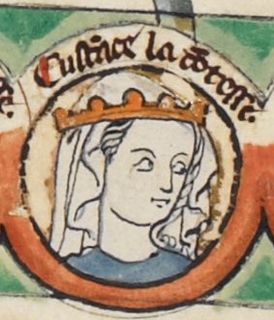 W
WConstance of Normandy was a Duchess of Brittany.
Cristina, daughter of Edward the Exile and Agatha, was the sister of Edgar Ætheling and Saint Margaret of Scotland, born in the 1040s. Cristina's nieces Edith and Mary were sent to Romsey Abbey, near Southampton, in 1086 when she was abbess.
 W
WSaint Cuthburh or Cuthburg, Cuthburga was the first Abbess of Wimborne Minster. She was the sister of Ine, King of Wessex and was married to the Northumbrian king Aldfrith.
 W
WEadburh was the daughter of King Edward the Elder of England and his third wife, Eadgifu of Kent.
 W
WEadgifu or Edgifu also known as Edgiva or Ogive was Queen of the West Franks as the wife of King Charles the Simple. She was a daughter of Edward the Elder, King of Wessex and England, and his second wife Ælfflæd.
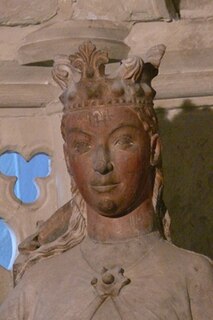 W
WEdith of England, also spelt Eadgyth or Ædgyth, a member of the House of Wessex, was German queen from 936, by her marriage with King Otto I.
 W
WSaint Edith of Wilton was an English nun, a daughter of Edgar the Peaceful, king of England. She was born between 961 and 964 and died on 16 September in a year between 984 and 987. Following her death in 984, she became the patron saint of her community at Wilton Abbey in Wiltshire and churches were dedicated to her in Wiltshire and in other parts of Anglo-Saxon England. Her biography was written by Goscelin and her feast day is on 16 September.
 W
WEleanor of England was the eldest surviving daughter of King Edward I of England and his first wife, Eleanor of Castile.
 W
WEleanor of England was the youngest child of John, King of England and Isabella of Angoulême.
 W
WEleanor of England, was Queen of Castile and Toledo as wife of Alfonso VIII of Castile. She was the sixth child and second daughter of Henry II, King of England, and Eleanor of Aquitaine.
 W
WEleanor of Woodstock was an English princess and the duchess of Guelders by marriage to Reginald II of Guelders. She was regent as the guardian of their minor son Reginald III from 1343 until 1344. She was a younger sister of Edward III of England.
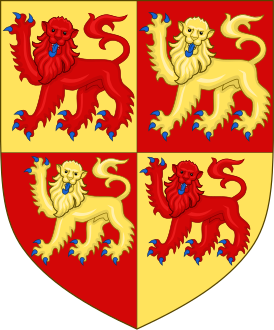 W
WElen ferch Llywelyn was the daughter of Llywelyn the Great of Gwynedd in North Wales by Joan, Lady of Wales, the natural daughter of King John of England. She is sometimes referred to as Elen 'the Elder' to distinguish her from a younger sister of the same name, wife of Máel Coluim II, Earl of Fife.
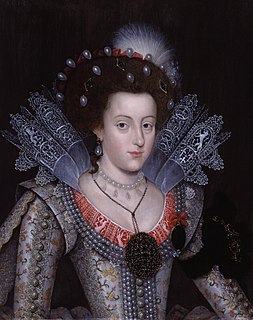 W
WElizabeth Stuart was Electress of the Palatinate and briefly Queen of Bohemia as the wife of Frederick V of the Palatinate. Because her husband's reign in Bohemia and Palatinate lasted for just one winter, Elizabeth is often referred to as the "Winter Queen".
 W
WElizabeth of Rhuddlan was the eighth and youngest daughter of King Edward I and Queen Eleanor of Castile. Of all of her siblings, she was closest to her younger brother King Edward II, as they were only two years apart in age.
 W
WElizabeth of York was Queen of England from her marriage to King Henry VII on 18 January 1486 until her death in 1503. Elizabeth married Henry after his victory at the Battle of Bosworth Field, which marked the end of the Wars of the Roses. Together, they had seven children.
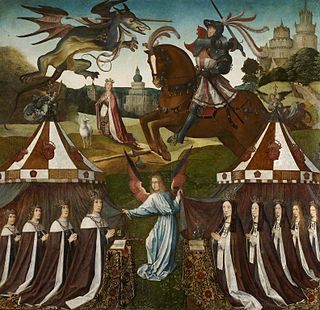 W
WElizabeth Tudor was the second daughter and fourth child of Henry VII of England and Elizabeth of York.
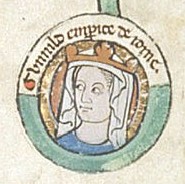 W
WGunhilda of Denmark, was Queen consort of Germany by her marriage with King Henry III from 1036 until her death.
 W
WHenrietta Anne of England was the youngest daughter of King Charles I of England, Scotland and Ireland and Henrietta Maria of France.
 W
WIsabella of England was a princess of the House of Plantagenet and Holy Roman Empress and Queen of Sicily and Germany from 1235 until her death as the third wife of Emperor Frederick II.
 W
WJoan of England was a daughter of Edward III and his wife, Philippa of Hainault. Joan, also known as Joanna, was born in the Tower of London. As a child she was placed in the care of Marie de St Pol, wife of Aymer de Valence and foundress of Pembroke College, Cambridge. She grew up with her sister Isabella, her brother Edward, and their cousin Joan of Kent, and she died in the Black Death that struck Europe in 1348.
 W
WJoan of England, was Queen consort of Scotland from 1221 until her death. She was the third child of John, King of England and Isabella of Angoulême.
 W
WJoan of England was a queen consort of Sicily and countess consort of Toulouse. She was the seventh child of Henry II, King of England, and Eleanor, Duchess of Aquitaine. From her birth, she was destined to make a political and royal marriage. She married William II of Sicily and later Raymond VI, Count of Toulouse, two very important and powerful figures in the political landscape of Medieval Europe.
 W
WJoan, Countess of Kent, known to history as The Fair Maid of Kent, was the mother of King Richard II of England, her son by her third husband, Edward the Black Prince, son and heir apparent of King Edward III. Although the French chronicler Jean Froissart called her "the most beautiful woman in all the realm of England, and the most loving", the appellation "Fair Maid of Kent" does not appear to be contemporary. Joan inherited the titles 4th Countess of Kent and 5th Baroness Wake of Liddell after the death of her brother John, 3rd Earl of Kent, in 1352. Joan was made a Lady of the Garter in 1378.
 W
WJoan of the Tower, daughter of Edward II of England and Isabella of France, was the queen of Scotland from 1329 to her death as the first wife of David II of Scotland.
 W
WJoan, Lady of Wales and Lady of Snowdon, also known by her Welsh name of Siwan, was the illegitimate daughter of King John of England, and was the wife of Llywelyn the Great, Prince of Wales, effective ruler of all of Wales.
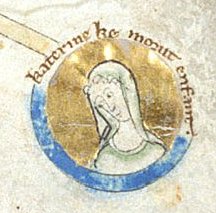 W
WKatherine of England was the fifth child of Henry III and his wife, Eleanor of Provence. She was born either a deaf-mute or just deaf and mentally challenged and was very sickly. She possibly had a degenerative disease. She did not survive her fourth year and died at Windsor.
 W
WPhilippa of Lancaster was Queen of Portugal from 1387 until 1415 by marriage to King John I. Born into the royal family of England, her marriage secured the Treaty of Windsor and produced several children who became known as the "Illustrious Generation" in Portugal.
 W
WLouisa Maria Teresa Stuart, known to Jacobites as The Princess Royal, was the last child of James II and VII (1633–1701), the deposed king of England, Scotland and Ireland, by his second wife Mary of Modena. In English, she was called Louisa Maria and Louise Marie in French. Like her brother The Old Pretender, she was by religion a Roman Catholic which as the Act of Settlement 1701 provided, debarred them both from succession to the English throne after the death of their Protestant half-sister Queen Anne.
 W
WMargaret of England was Queen of Scots by marriage to King Alexander III.
 W
WMargaret of England was the tenth child and seventh daughter of King Edward I of England and his first wife, Eleanor of Castile. Her husband was John II, Duke of Brabant, whom she married in 1290, the year of her mother's death. Margaret and John had one child, John III, Duke of Brabant.
 W
WSaint Margaret of Scotland, also known as Margaret of Wessex, was an English princess and a Scottish queen. Margaret was sometimes called "The Pearl of Scotland". Born in the Kingdom of Hungary to the expatriate English prince Edward the Exile, Margaret and her family returned to England in 1057. Following the death of king Harold II at the Battle of Hastings in 1066, her brother Edgar Ætheling was elected as King of England but never crowned. After she and her family fled north, Margaret married Malcolm III of Scotland by the end of 1070.
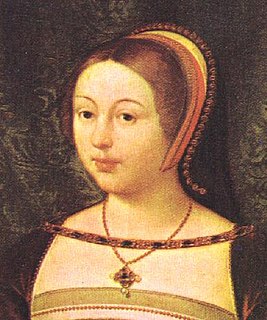 W
WMargaret Tudor was Queen consort of Scotland from 1503 until 1513 by marriage to James IV of Scotland and then, after her husband died fighting the English, she became regent for their son James V of Scotland from 1513 until 1515.
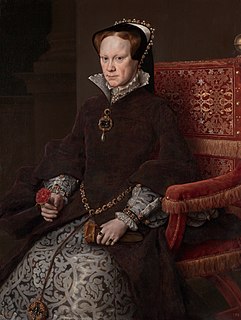 W
WMary I, also known as Mary Tudor, and as "Bloody Mary" by her Protestant opponents, was Queen of England and Ireland from July 1553 until her death in 1558. She is best known for her vigorous attempt to reverse the English Reformation, which had begun during the reign of her father, Henry VIII. Her attempt to restore to the Church the property confiscated in the previous two reigns was largely thwarted by Parliament, but during her five-year reign, Mary had over 280 religious dissenters burned at the stake in the Marian persecutions.
 W
WMary II was Queen of England, Scotland, and Ireland, co-reigning with her husband, William III & II, from 1689 until her death in 1694.
 W
WMary of Waltham, Duchess of Brittany, was a daughter of King Edward III of England and Philippa of Hainault and was the wife of John IV, Duke of Brittany, known in England as "John V" and "The Conqueror". Mary was made a Lady of the Garter in 1378.
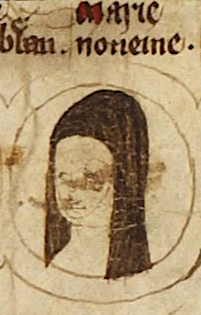 W
WMary of Woodstock was the seventh named daughter of Edward I of England and Eleanor of Castile. She was a nun at Amesbury Priory, but lived very comfortably thanks to a generous allowance from her parents. Despite a papal travel prohibition in 1303, she travelled widely around the country.
Mary of York was the second daughter of Edward IV of England and his queen consort Elizabeth Woodville.
 W
WMary Tudor was an English princess who was briefly queen of France. She was the younger surviving daughter of King Henry VII of England and Elizabeth of York, and the third wife of Louis XII of France, who was more than 30 years older than her. Following his death, she married Charles Brandon, 1st Duke of Suffolk. Performed secretly in France, the marriage occurred without the consent of Mary's brother, Henry VIII. The marriage necessitated the intervention of Thomas Wolsey; Henry eventually pardoned the couple, after they paid a large fine.
 W
WMary, Princess Royal, was an English princess, member of the House of Stuart, and by marriage Princess of Orange and Countess of Nassau; she also acted as regent for her minor son from 1651 to 1660. She also was the first holder of the title Princess Royal.
 W
WMatilda of England was an English princess of the House of Plantagenet and by marriage Duchess consort of Saxony and Bavaria from 1168 until her husband's deposition in 1180.
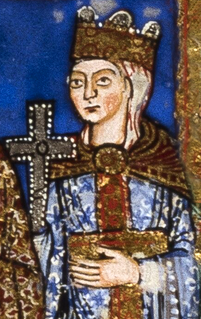 W
WEmpress Matilda, also known as the Empress Maude, was one of the claimants to the English throne during the civil war known as the Anarchy. The daughter of King Henry I of England, she moved to Germany as a child when she married the future Holy Roman Emperor Henry V. She travelled with her husband into Italy in 1116, was controversially crowned in St Peter's Basilica, and acted as the imperial regent in Italy. Matilda and Henry V had no children, and when he died in 1125, the imperial crown was claimed by his rival Lothair of Supplinburg.
 W
WAnne de Mowbray, 8th Countess of Norfolk, later Duchess of York and Duchess of Norfolk was the child bride of Richard of Shrewsbury, Duke of York, one of the Princes in the Tower. She died at the age of eight.
 W
WPhilippa of England, also known as Philippa of Lancaster, was Queen of Denmark, Norway and Sweden from 1406 to 1430 by marriage to King Eric of the Kalmar Union. She was the daughter of King Henry IV of England by his first spouse Mary de Bohun and the younger sister of King Henry V. Queen Philippa participated significantly in state affairs during the reign of her spouse, and served as regent of Denmark from 1423 to 1425.
 W
WElizabeth Stuart was the second daughter of Charles I, king of England, Scotland and Ireland, and his wife, Henrietta Maria of France.
 W
WIsabel Stuart, also called Isabella, was a daughter of the future King James II of England and his second wife, Mary of Modena.
 W
WMary Stuart was the third daughter and sixth child of James VI and I by Anne of Denmark. Her birth was much anticipated. She developed pneumonia at 17 months and died the following year.